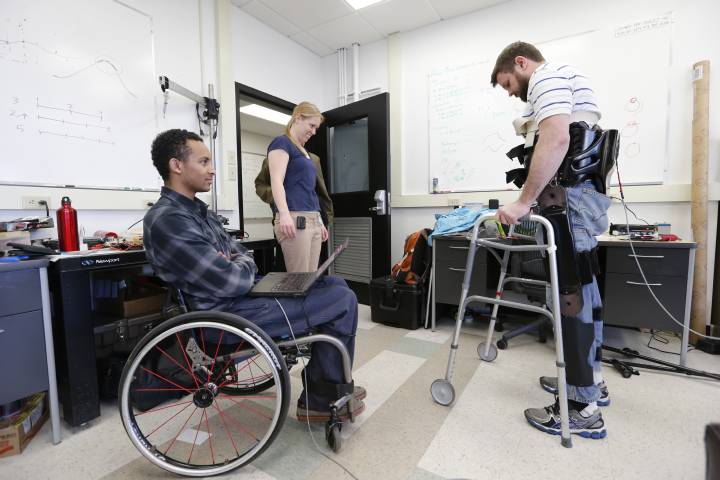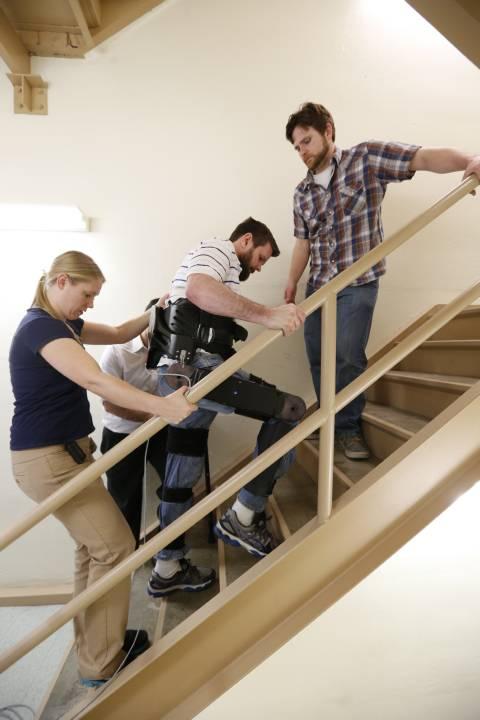
When Michael Goldfarb started working on exoskeletons in the early ’90s, they were a long way from being usable in everyday life.
But 20 years later, a device that allows people in wheelchairs to walk — developed in his lab at Vanderbilt University — got FDA approval in early March.
Exoskeletons are wearable machines that allow for increased limb movement.
This model,
called Indego, is a robotic brace that straps around one’s waist and legs. People with spinal cord injuries who use a wheelchair can put the exoskeleton on themselves. Then, if they lean forward, the device stands them up and starts moving their legs.
This video produced by Vanderbilt shows how a prototype works.
This machine is not designed to completely replace wheelchairs, Goldfarb says. People can use it for short periods of time to exercise their legs or to access something they couldn’t otherwise.
But he says it’s still pretty amazing to see this happen.

“People put it on, stand up and walk for the first time in a long time, and they just, boy, are so happy,” he says.
Goldfarb has been working on devices like this for a long time. He created a similar device as part of his doctoral project — but it was much clunkier.
“It was plugged into the wall, it was plugged into desktop computers, it was plugged into a lot of large pieces of instrumentation,” he says. “I had these people who used the system, and I know they liked it, but I always felt like it was not going to leave the lab.”
This newer version, Indego, is actually usable in the real world. It was licensed by technology company Parker Hannifin, which is producing and selling it. Spokesman Aidan Gormley
says the company is already getting orders from several medical clinics and even some individuals who want one for themselves.
But the biggest barrier right now is the cost: $80,000 for a single device.
To convince insurance companies to reimburse the cost, Parker Hannifin has to prove that it’s beneficial and will lower other health care costs. Gormley says that next step for the exoskeleton could take years.


